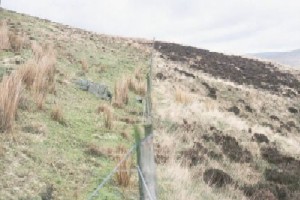Effects on biodiversity of changing livestock densities and assessment of indicators of biodiversity in relation to maintenance of land in 'Good Agricultural and Environmental Condition'
 Field research using biodiversity indicators derived from a stakeholder workshop and expert dialogue has characterised the impacts of reduced livestock grazing on upland grass/heath, as a key agri-environment issue. At the majority of paired 'reduced' v 'continued' sheep grazing sites, deer presence was greater where sheep grazing was reduced. Despite this, where sheep grazing was reduced, vegetation height and Calluna cover increased but rough grass and overall structural heterogeneity both decreased. If deer populations increase when sheep grazing is reduced, the short-term biodiversity impact will be limited, but longer-term impacts due to the change in herbivore species are likely. Field research using biodiversity indicators derived from a stakeholder workshop and expert dialogue has characterised the impacts of reduced livestock grazing on upland grass/heath, as a key agri-environment issue. At the majority of paired 'reduced' v 'continued' sheep grazing sites, deer presence was greater where sheep grazing was reduced. Despite this, where sheep grazing was reduced, vegetation height and Calluna cover increased but rough grass and overall structural heterogeneity both decreased. If deer populations increase when sheep grazing is reduced, the short-term biodiversity impact will be limited, but longer-term impacts due to the change in herbivore species are likely.
Results compared reasonably well with those predicted by stakeholders at the outset, and also clearly demonstrate the difficulty in having objective measures of ‘under-grazing’ (GAEC cross-compliance) in semi-natural habitats.
Contacts
Stakeholder's priorities
The stakeholder workshop(s) highlighted that different groups (livestock, biodiversity, forestry, access and/or community interests) differed in their visions of where policy support should be given, but generally preferred more holistic management aims – i.e. broad-ranging objectives, such as for National Parks, were preferred over policies with narrow objectives, such as biodiversity protection, agriculture or carbon management. Across all stakeholder groups, livestock production was seen as the most important activity, but a wide range of possible directions, outcomes and priorities for land-use management decision-making were identified.
Contacts
|